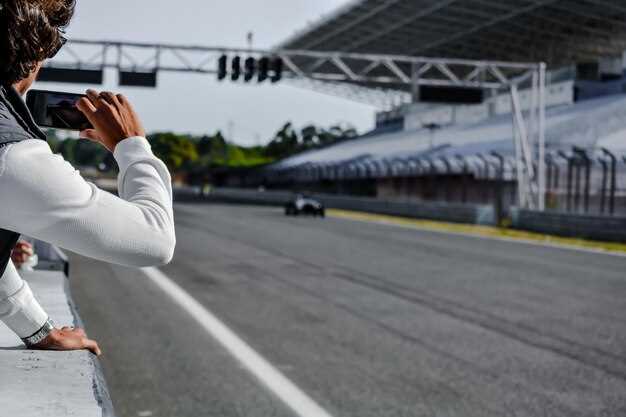
Aerodynamics plays a crucial role in determining the performance of drag racing vehicles, where every millisecond counts. The relationship between speed and aerodynamic efficiency is fundamental; as a car accelerates down the track, the impact of air resistance becomes increasingly significant. Understanding how aerodynamic forces interact with a racing car can help teams optimize their designs for maximum acceleration and minimum drag.
In drag racing, the primary goal is to achieve the highest possible speed in the shortest amount of time. This objective is heavily influenced by factors such as drag, lift, and downforce. Drag, often referred to as aerodynamic drag, opposes the vehicle’s motion and can greatly hinder performance. Teams utilize various aerodynamic strategies to minimize drag while ensuring stability at high speeds, demonstrating the intricate balance between speed and aerodynamic design.
Innovative techniques, such as front and rear spoilers, diffusers, and streamlined body shapes, are implemented to enhance a car’s aero performance. The science of aerodynamics not only contributes to speed but also affects the overall handling and safety of drag racing vehicles. By exploring the nuances of aerodynamic principles, racers can make informed decisions that lead to improved performance on the track.
Understanding Drag and Its Impact on Vehicle Speed

Drag is a force that opposes the motion of a vehicle through the air, significantly affecting its speed and performance. In drag racing, the goal is to achieve maximum velocity over a short distance, making the reduction of drag a critical factor for success. The aerodynamic design of a vehicle plays a crucial role in minimizing this force, enhancing speed and acceleration.
There are two primary types of drag: parasitic and induced. Parasitic drag arises from the vehicle’s shape and surface area, which creates resistance as the vehicle moves. Induced drag is related to lift; as air flows over the vehicle, the generation of lift results in increased resistance. Understanding these components allows engineers to optimize car designs for drag racing, focusing on body contours that streamline airflow.
Boost refers to the additional pressure applied to the engine to increase its power output. While boost can enhance acceleration, it is essential to balance it with drag management. Higher speeds can lead to increased drag, which may offset the benefits gained from added power. Therefore, race teams must carefully analyze the relationship between engine boost and drag to maximize overall speed.
A well-designed drag racer will incorporate aerodynamic features such as spoilers, diffusers, and air dams, which help manage airflow over and under the vehicle. These features not only reduce drag but may also increase downforce, providing better traction on the track. Understanding drag dynamics enables racers to fine-tune their setups, achieving the optimal combination of speed and control for competitive advantage.
Enhancing Downforce for Improved Traction and Stability

In the competitive world of drag racing, aerodynamics plays a crucial role in determining a vehicle’s performance on the track. One of the key aspects of aerodynamic design is downforce, which significantly impacts traction and stability during high-speed runs. By enhancing downforce, racers can achieve better grip on the asphalt, allowing them to maximize acceleration and optimize control.
Downforce is created when air flows over and under the car, generating a pressing force that pushes the vehicle down toward the ground. This force increases tire contact with the surface, which improves traction. Better traction means less wheel spin, allowing drivers to accelerate more effectively. Specifically, at higher speeds, the need for downforce becomes even more pronounced, as the forces acting on the car can lead to instability without adequate aerodynamic support.
One effective way to boost downforce is through the implementation of aerodynamic components such as front splitters, rear wings, and diffusers. Front splitters act by redirecting airflow, creating a low-pressure zone beneath the vehicle. Rear wings generate lift in the opposite direction, working to push the rear end down during acceleration. Additionally, diffusers at the rear enhance airflow patterns, effectively increasing downforce without a significant increase in drag.
A well-designed aerodynamic package not only focuses on maximizing downforce but also minimizing drag. The relationship between downforce and drag is delicate; excessive drag can negate the benefits of increased downforce. Therefore, it is essential to achieve a harmonious balance. Wind tunnel testing and computational fluid dynamics (CFD) simulations are valuable tools for designers to refine their concepts, ensuring that the final design provides an optimal boost in performance while maintaining low drag coefficients.
Ultimately, the enhancement of downforce is key to achieving superior traction and stability in drag racing. By focusing efforts on aerodynamic improvements, racers can unlock the full potential of their vehicles, achieving higher speeds and better overall performance on the track. As technology advances, the understanding and application of aerodynamics will continue to evolve, paving the way for even more innovative solutions in the quest for speed on the drag strip.
Integrating Aerodynamic Modifications for Competitive Edge
In drag racing, achieving optimal speed is paramount, and one of the key factors influencing performance is aerodynamics. By integrating aerodynamic modifications, racers can significantly boost their vehicles’ efficiency and maximize speed on the track.
One of the most effective modifications is the addition of a front splitter. This component helps to increase downforce, allowing the car to maintain stability at high speeds. A well-designed splitter redirects airflow, minimizing lift and enhancing traction. As a result, racers can accelerate more aggressively off the line, giving them a crucial edge in competitive scenarios.
Another essential modification is the installation of a rear wing. This aerodynamic feature not only provides increased downforce but also alters the airflow pattern around the vehicle. A properly calibrated wing can reduce drag at high speeds, allowing for smoother airflow and improved acceleration. This dynamic balance between downforce and drag plays a vital role in achieving optimal speeds during a race.
Additionally, streamlining the car’s body profile is crucial for reducing drag. By minimizing protrusions and optimizing the shape of the vehicle, racers can enhance airflow around the car. Implementing features such as side skirts and rear diffusers can significantly reduce turbulence, allowing for a cleaner transition of air. This strategic integration of modifications not only boosts speed but also enhances overall handling during high-speed maneuvers.
The use of lightweight materials can further complement aerodynamic improvements. A reduced weight enhances acceleration and deceleration rates, directly contributing to a competitive edge. When combined with optimal aerodynamic designs, the synergy between aerodynamics and weight reduction can lead to substantial gains in racing performance.
Ultimately, the integration of aerodynamic modifications serves as a critical strategy for drag racers seeking to enhance their vehicles’ performance. By focusing on aspects such as downforce, drag reduction, and weight efficiency, racers can achieve the speed necessary to secure victories on the track.



